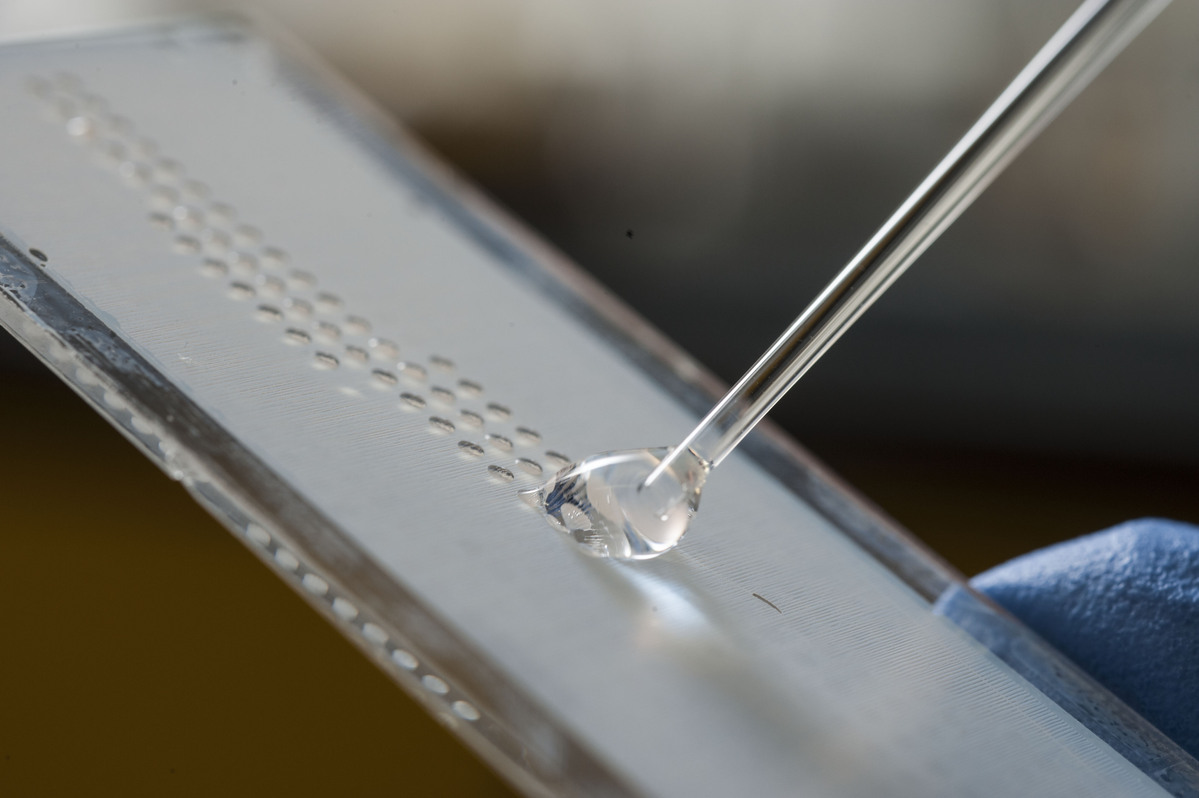Water Droplets as Miniaturized Test Tubes
Modern laboratory technology cannot only help develop new medicine, but also make quicker diagnoses of higher precision. Scientists of KIT have found a way to execute so-called high-throughput screenings with thousands of samples being tested in parallel without any expensive and complex robot systems that have been necessary so far. Thus, costs are reduced by a factor of up to one hundred.
Chemist Pavel Levkin of KIT’s Institute of Toxicology and Genetics (ITG) and his multidisciplinary team have developed a surface on which aqueous solutions self-arrange in thousands of separate droplets. Highly water-attracting and highly water-repellent areas are produced on an array surface. On such a droplet microarray (DMA), biological samples can be subjected to substance screening. Every individual droplet is used as a type of test tube for biological experiments. The size of the droplets to be investigated can be varied between three and 250 nanoliters. Estimated roughly, a DMA consumes a thousand times less reactants and experiments can also be performed with only a few living cells. Pipetting robots and pipette tips that have been indispensable so far are no longer required. The cost reduction potential of this new technology is enormous.
The scientists expect that screening results will be more reliable and development of medicine will be much cheaper in the future. To commercialize their findings, the researchers plan to establish the company Aquarray. In this way, they want to enable biological research laboratories with small funds to perform high-throughput screenings. First prototypes are being tested on the market.
Further information in the Press Release 054/2017.
mex, 28.04.2017

